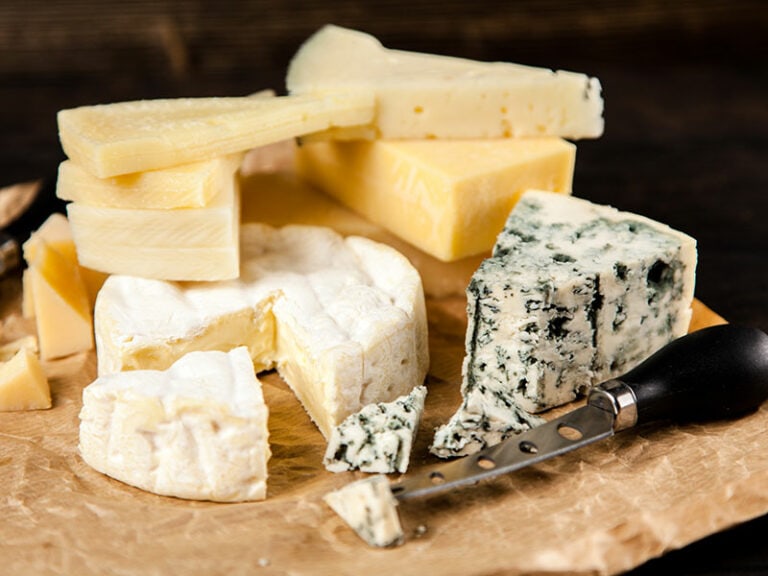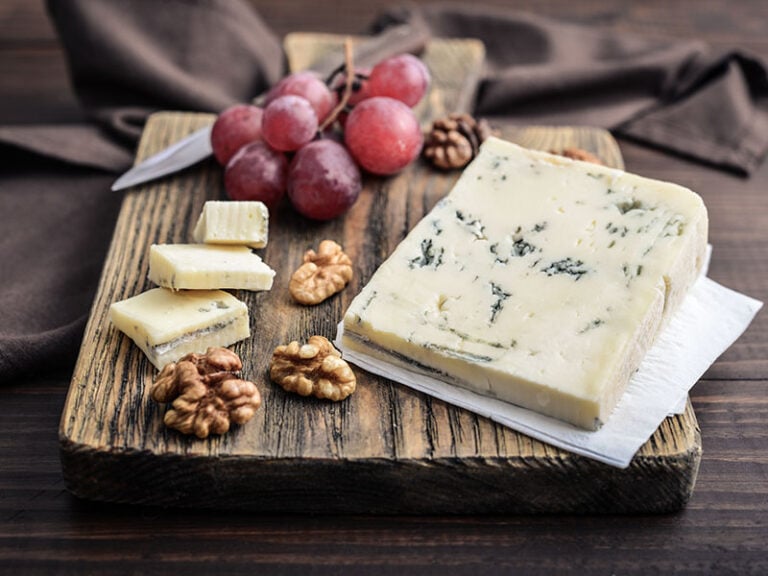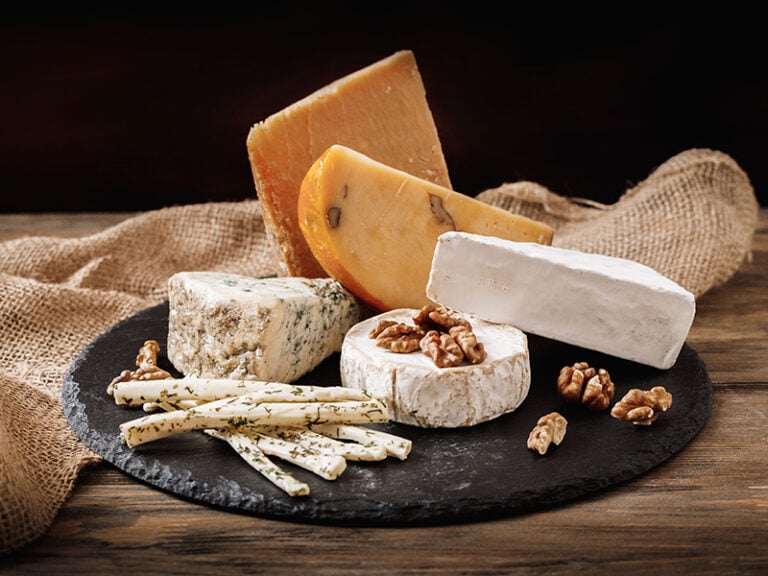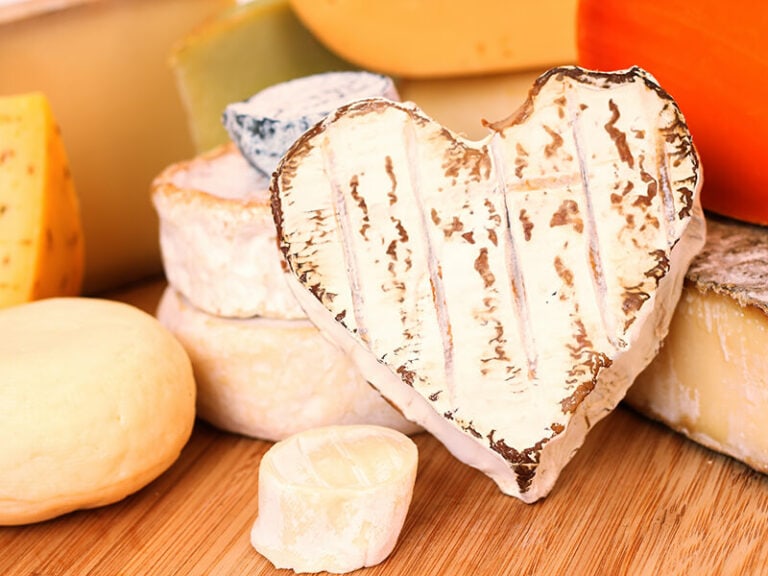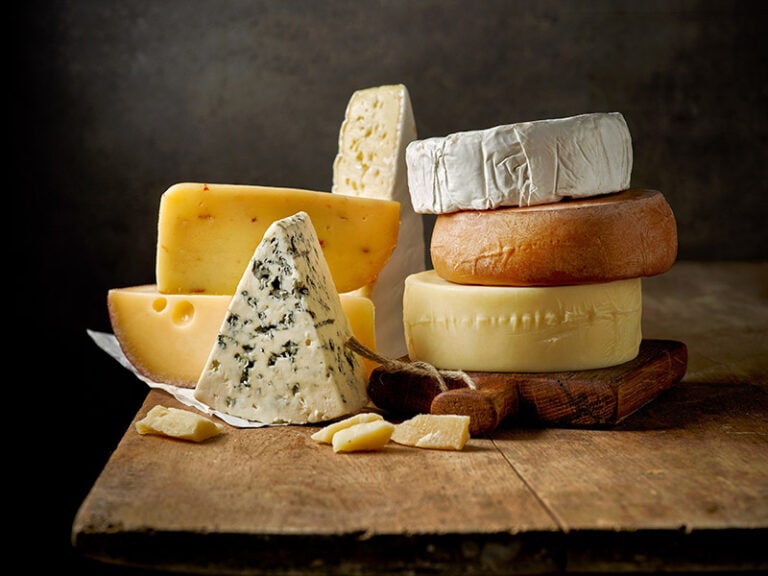The biggest question for a cheese eater like me is the difference between blue cheese and gorgonzola. Unlike other cheeses with their rich, milky flavor, they are very different versions of cheese.
Generally, they all use Penicillium Glaucum to create the signature blue veins on the blue cheese. This bacteria also brings a distinctive flavor to all the blue cheese.
So, what are the dissimilarities between these two well-known kinds of cheese? If you have the same questions as me, please follow the following information in this article.
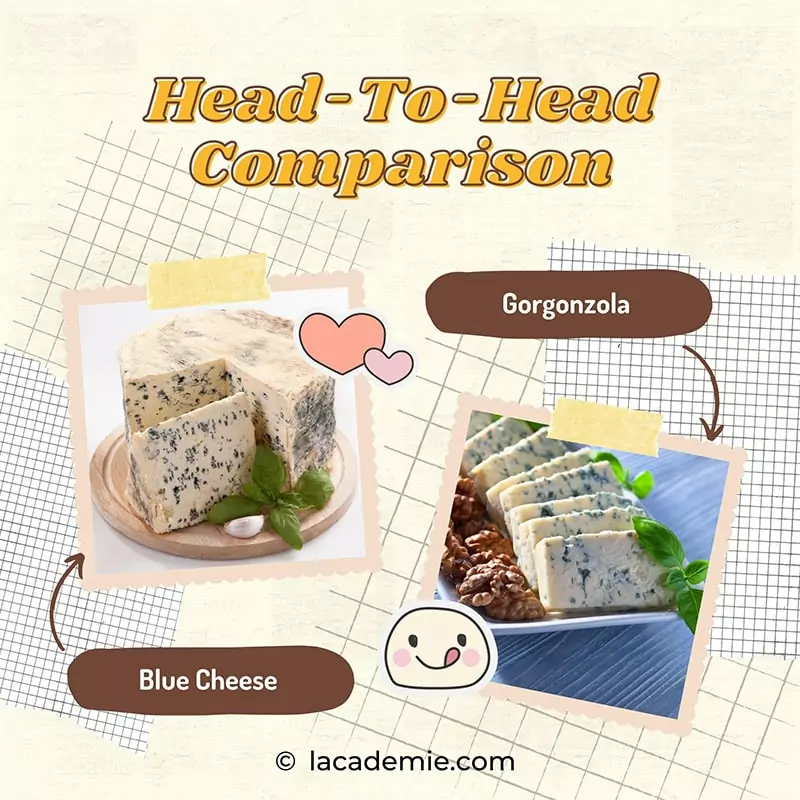
General Information About Blue Cheese and Gorgonzola Cheese
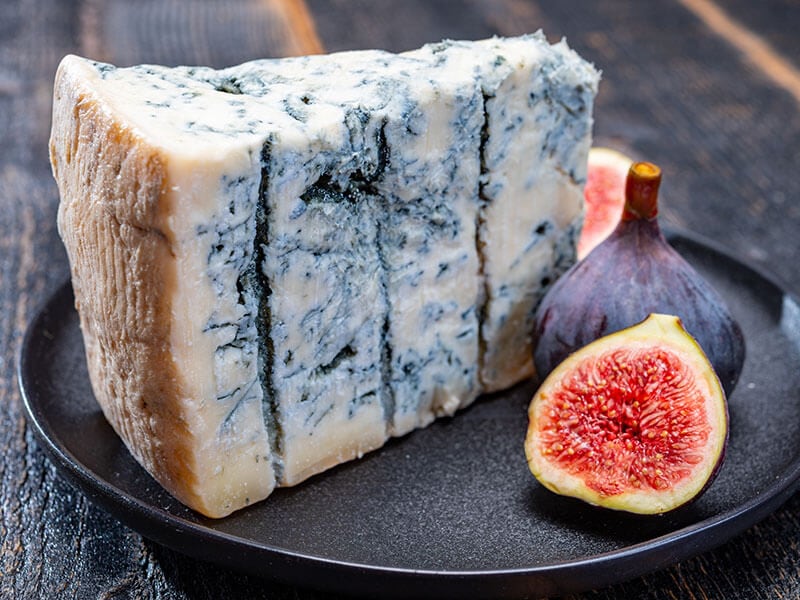
Blue cheese (so-called bleu cheese) and gorgonzola are quite the same, from their appearance to production. This blue component creates the characteristic flavor but makes it difficult for you to distinguish these two kinds of cheese.
You should know, blue cheese is just a common name for a series of blue cheeses with different characters. The name “blue cheese” describes the blue, sometimes bluish-gray or blue-green spots or veins in the cheese.
Actually, gorgonzola is one member of the blue cheese family. They are produced by almost the same method, except the type of milk from which they are made.
Because blue cheese are available in many varieties, you can spot many people comparing blue cheese with Roquefort, ranch, feta cheese, goat cheese, etc. However, it will take quite a while to list out all the differences as, again, there are several types of blue cheese.
Along the lines of gorgonzola, blue cheese also has several outstanding varieties with different flavors and textures.
Types of Blue Cheese and Gorgonzola Cheese
It’s time to discover the various types of blue cheese and Gorgonzola cheese. Let’s go!
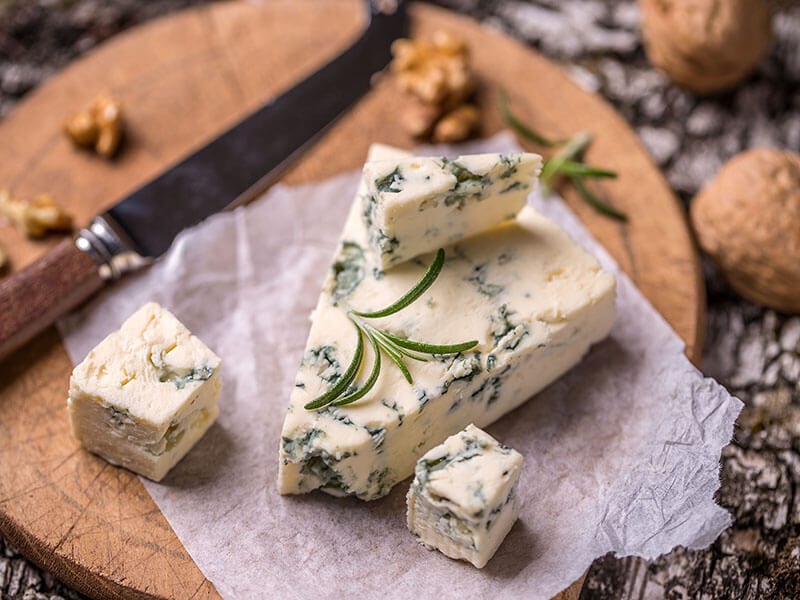
Types Of Blue Cheese
The types of blue cheese with their own signature blue cheese flavor and smell that you will often encounter are:
Types Of Gorgonzola Cheese
Regarding gorgonzola, there are two main types that you often use, and the main difference lies in their aging time:
Discover all the types of blue cheese and their signature characteristics!
Blue Cheese Vs. Gorgonzola Cheese: The Differences
When you compare the most traditional versions of blue cheese and gorgonzola, you will notice a few striking differences:
Appearance and Color
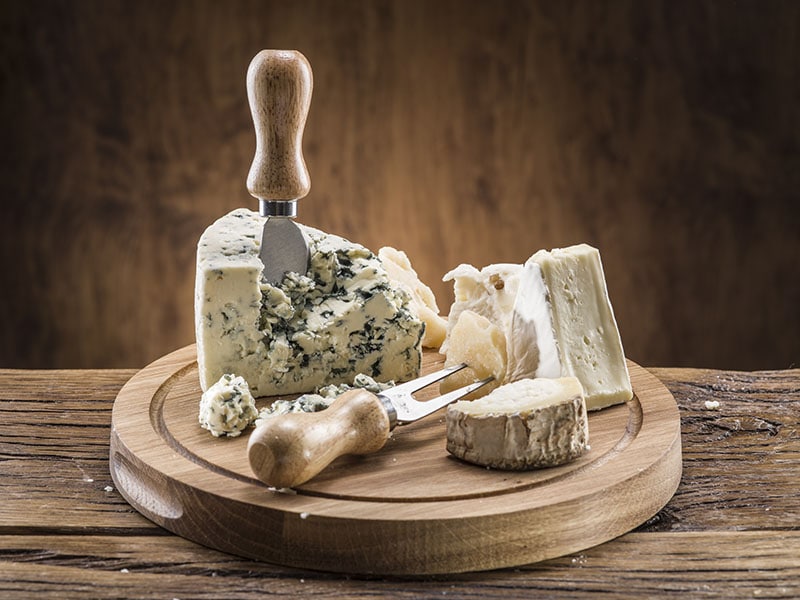
Blue cheese is usually white with alternating blue, blue-grey, or blue-green veins and spots. Meanwhile, gorgonzola has blue-green veins running throughout the white cheese.
The blue molds present in the ridges of this cheese are the result of bacteria initiating aging, thus giving the cheese its distinctive blue color and intense flavor.
In general, their appearance is relatively similar, and you have to learn more about other factors to distinguish them.
Flavor and Smell
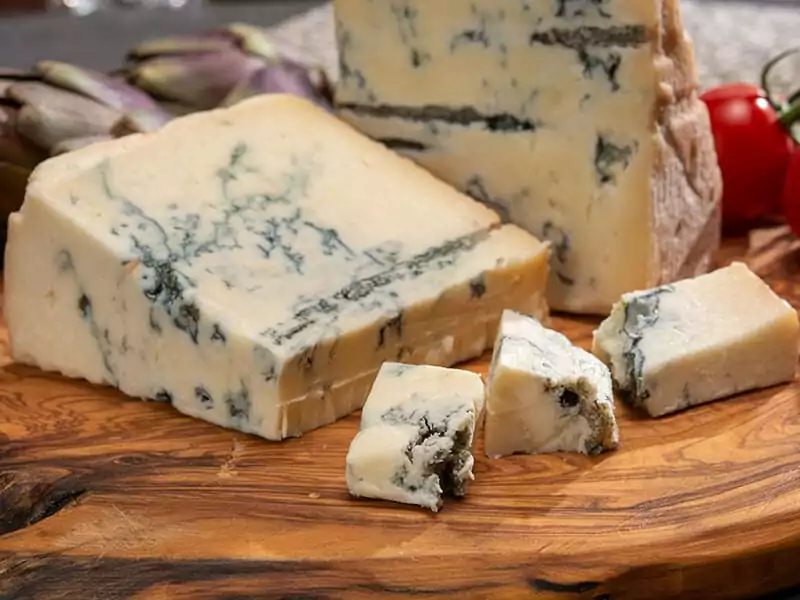
Blue cheese has many varieties, and each type will have a relatively pronounced flavor change. Generally, blue cheese usually tastes sharper, saltier, more piquant, and more acidic than gorgonzola, with a very characteristic strong and pungent smell.
Gorgonzola usually has a milder taste than other varieties of blue cheese with a nutty note. It can be said that gorgonzola is the mildest blue cheese, making it one of the feasible alternatives for blue cheese. However, you should note that the older the gorgonzola, the sharper the taste.
Texture
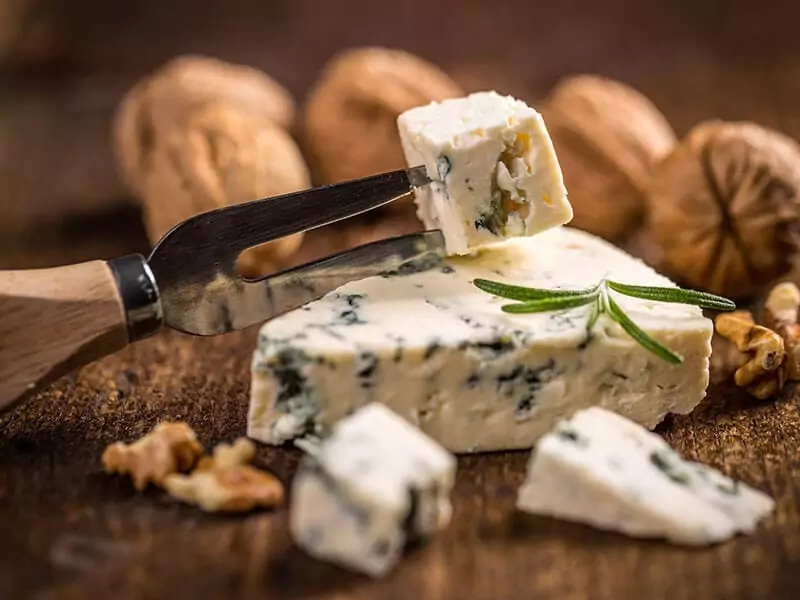
Most blue cheeses are soft, creamy, crumbly, and arguably the most crumbly in the cheese family. You will notice that it becomes brittle at first, then becomes softer and spreadable over time.
Like blue cheese, gorgonzola also generally has an extraordinarily crumbly and semi-soft texture. This texture can change depending on the age of the gorgonzola, making it firmer or creamier.
The Formation and Development
Blue cheese is firstly made in France, especially from sheep’s milk. After that, the cow’s milk and goat’s milk versions also appear. As many people believe, blue cheese has been discovered by accident by aging in caves with various mold formations. Roquefort, the most common type of blue cheese, was created in 1070 AD.
On the other hand, gorgonzola is a native of Northern Italy (Piedmont and Lombardy), made from unskimmed cow’s milk. The blue-green veins were formed later in the 11th century, while gorgonzola was discovered sooner, around 879 AD.
Manufacturing Process
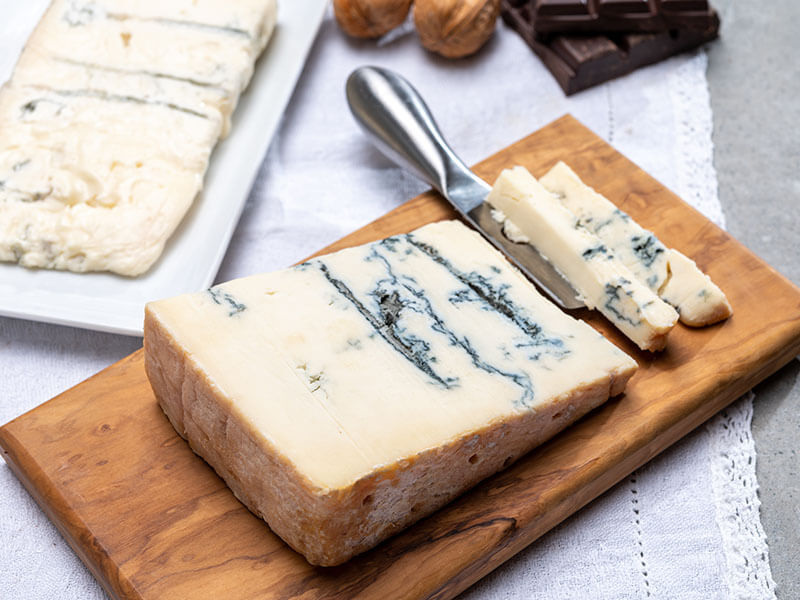
Both blue cheese and gorgonzola are made from Penicillium Glaucum mold and animal milk. They are all aged for several months to bring out the signature blue veins.
Blue Cheese Production
The blue cheese production process involves the following steps:
- Step 1: Pasteurize raw milk (cow’s, sheep’s or goat’s milk)
- Step 2: Use a starter culture to acidify and change the milk to solid form (convert lactose to lactic acid)
- Step 3: Add rennet to solidify the milk into curds
- Step 4: Cut the curds and release the whey from the curds
- Step 5: Add Penicillium glaucum mold and a bit of salt to prohibit spoilage
- Step 6: Wait for 2 or 3 months for cheese aging at a controlled temperature.
If you ever wonder how blue cheese is made, here is the answer!
Gorgonzola Cheese Production
And to make gorgonzola, people usually follow these similar steps as blue cheese:
- Step 1: Acidify and heat the unskimmed cow’s or goat’s milk
- Step 2: Coagulate the milk with culture and rennet
- Step 3: Cut the curds and stir them for removing the whey
- Step 4: Drain the curds to get rid of all the moist
- Step 5: Add Penicillium glaucum mold and salt
- Step 6: Leave the cheese for about 3 to 4 months with metal rods for more mold to grow into veins.
Gorgonzola cheese is made professionally in an Italian factory! You can see this video to know more:
Nutritional Content
Both gorgonzola and blue cheese are not such healthy food due to their high calories, sodium, and saturated fat content. However, they have a high protein content and some suitable digestive enzymes. They also contain many minerals to contribute to your health (1).
Culinary Applications
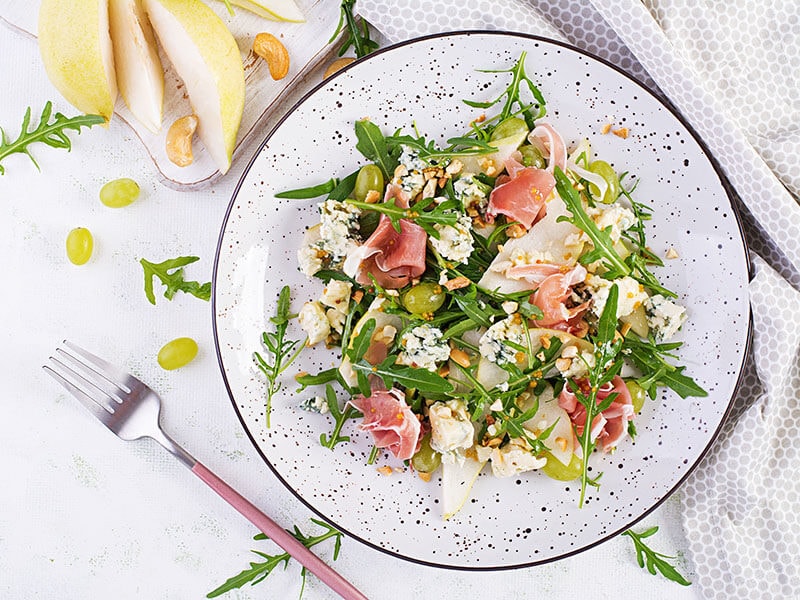
You can eat blue cheese directly or make it into spreads or melts. It is suitable for sandwiches or burgers. It goes best with pizza and salads made with spinach, nuts, and apples or pears.
You can also spread the tastiest blue cheese on crackers, fresh fruit, roasted almonds, and serve with fruit jam. Using blue cheese to make dips, dressings or sauces is also great.
With gorgonzola cheese, it is often served as a melting topping. This cheese is usually topped with risotto, polenta, burger, pasta, or pizza. You can also use it with fresh fruits or dry fruits and some kinds of salad. It is excellent as a cheese dip, too.
Below are some wonderful recipes you can make with your blue cheese and gorgonzola:
Homemade Blue Cheese Dressing
Instead of buying some dressing at the store, why not make your best version of blue cheese dressing right at home? This recipe is definitely simple to make with easy-to-find ingredients.
The extra creamy texture combines with the signature cheesy taste of blue cheese, making the best dressing you ever taste! This is perfect for dipping sauce or tossing with salad.
Try now this easy homemade blue cheese dressing for your delicious dinner!
Blue Cheese Pasta
If you are looking for a comfortable dinner for a scrumptious weekend, find out this blue cheese pasta recipe right now! You will taste the rich creaminess of blue cheese, creating a flavorsome cheesy pasta sauce.
Steak Gorgonzola Alfredo
This ”Olive Garden” cannot be any better with gorgonzola cheese! The toothsome taste of fettuccine alfredo goes so well with the smoky grilled steak. Gorgonzola cheese makes this recipe so much creamier, balancing with the fresh spinach.
Pear, Prosciutto, and Gorgonzola Pizza
This is a simple Italian-inspired recipe with some fresh pear and gorgonzola. They all go well with the signature taste of prosciutto and other spices to create such a great combined flavor. The crunchy pear and the creamy cheese are really a perfect combo!
FAQs
Some questions and answers below will definitely help you understand more about blue cheese and gorgonzola:
Make Your Toothsome Recipes With Blue Cheese and Gorgonzola!
I hope this information helps you overview blue cheese and gorgonzola cheese, with their similarities and differences. Incorporate this cheese into your meals to change the taste and add calcium and minerals to your diet.
Don’t forget to like, share and comment under this article for advice on a rich and healthy nutritional menu!
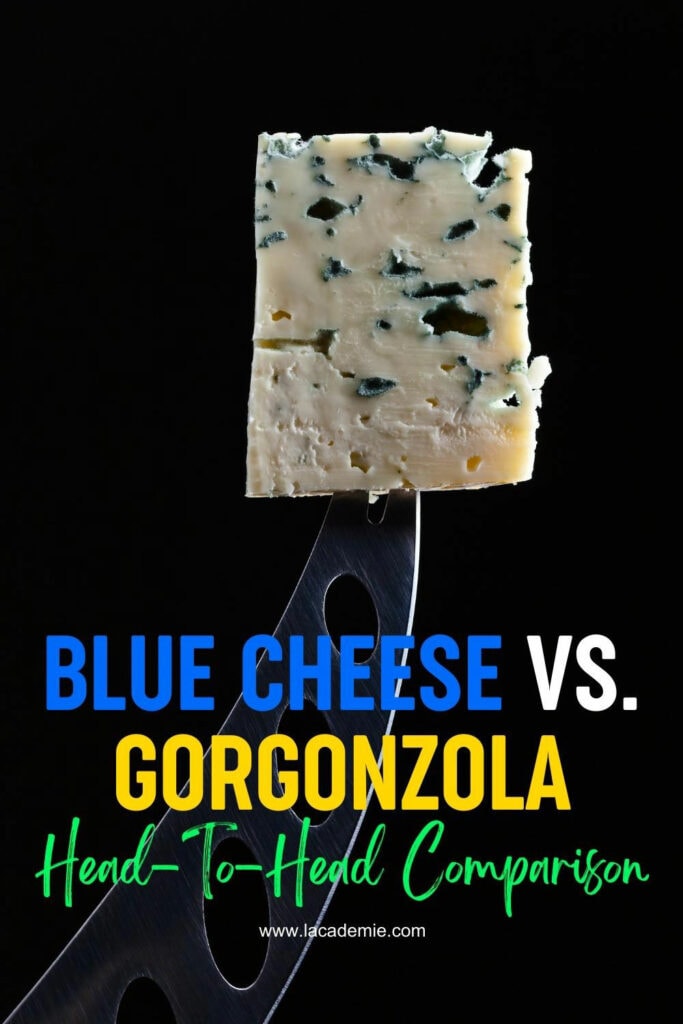
References
- Calories-Info.Com. 2021. Blue Cheese vs. Gorgonzola: 3 Facts You Must Know.
- Stewart, P.author B.P.and, 2013. The grammarphobia blog: Is the cheese blue or bleu? Grammarphobia.

